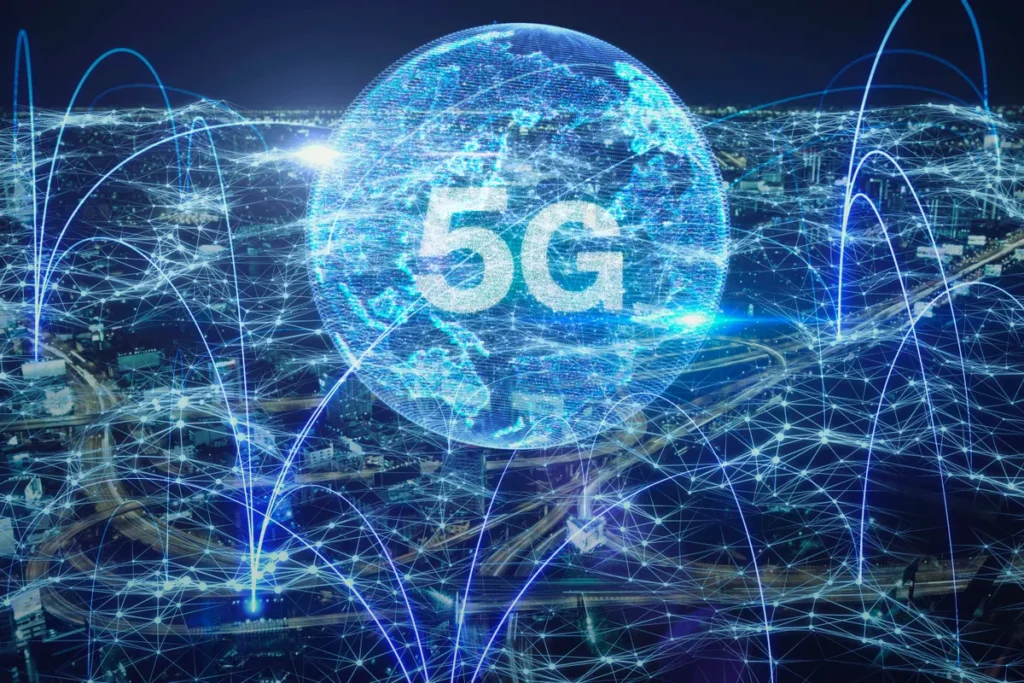5G represents the quantum leap in wireless communication that is going to redefine several facets of the technology sector. While moving from 4G to 5G has much to do with increasing internet speed, it will really be more of an increase in connectivity, facilitating new technologies and changing the way business will be done by different industries. How this very technology is going to change the face of technology completely, and in general, what the bigger implications of this new transformation are, is what we look into.

1. Better Connectivity and Speed
Probably the two most visible benefits of 5G technology would be increased speed of the internet and better connectivity.
- Speed: 5G is 100 times faster than 4G; theoretical peak reach 10 gigabits per second. A network boosted this way will pay dividends for most of the applications that need high bandwidth, from high-definition content streaming down to a very good virtual reality experience.
- Low Latency: While 4G gave 30-50 time delays, 5G brings this down to approximately 1 ms. Only this near-instant response time could facilitate real-time operations of online gaming, self-driving cars, or even remote surgeries.
2. Enabling of IoT (Internet of Things)
The Internet of Things basically refers to an interconnected network of devices communicating and disseminating information to each other without an end. It is greatly empowered by the technology that is brought into being with the help of 5G capability.
- Device Density: At an added support of as many as a million devices per square kilometer against 100,000 with 4G, more devices can be optimally connected within a prescribed geographical area, hence facilitating the concept of smart cities and industrial IoT.
Advanced Communication: With close to zero latency and extreme speeds, 5G makes it possible for IoT devices to share data in real-time, hence making the devices smart, responsive, and efficient. This improves applications concerning smart homes, connected cars, and industrial automation.
- Network Slicing: There exists the full possibility of network slicing in the 5G network, whereby several virtual networks can overlay one physical 5G network. Several use cases are enabled, including enhanced mobile broadband, massive IoT, and ultra-reliable low latency communications.
- Private Networks: Any enterprise can build private 5G networks since they need better security, control, and performance for mission-critical applications.
4. Accelerated Autonomous Vehicles
Connected and automated vehicles run on real-time data and communication; 5G technology stands to be one of the intrinsic constituents that let development happen in that industry.
- Vehicle-to-Everything Communication: The 5G standard includes the possibility of V2X communication, passing information services originating from a vehicle to any other vehicle, infrastructure, or pedestrian. In this way, it would attain safety and control in the flow of traffic by making available real-time conditions of roads, traffic lights, and any danger.
- ENHANCED dAta ProceSSiNG: 5G, with its high speed in data transfer and low latency, is going to increase the data processing speed. This enables the vehicle to quickly go through data, hence improving its decision making and, therefore, its performance.
5. Health Care TraNsformed
Application of 5G technology is going to open new frontiers in health.
- Telemedicine: Real-time consultation, remote diagnostics and virtual surgery—these all become possible in 5G with close to zero lag. Development in this area broadens access to health care, particularly in rural and underprivileged areas.
- Remote monitoring: Devices continuously monitor the patient by reporting data in real time to the health providers for effective interventions in due time.
6. Augmenting Augmented Reality and Virtual Reality
5G upgrades make both AR and VR a good deal easier to get a more immersive and interactive experience. Particularly, these include high-quality streaming, which enables the streaming of high-resolution AR/VR content by virtue of increased bandwidth offered in 5G. This is clear in quality and hence realism, having virtual experiences pertaining to gaming, training, and simulation.
- Real-Time Interaction: Due to low latency, 5G is going to provide real-time interaction and responsiveness across augmented reality and virtual reality environments, hence making them more interactive and smooth.
7. Boosting Cloud Computing and Edge Computing
5G technology can further facilitate cloud computing and edge computing that become important to bear the additional data load coming from multiple connected devices.
- Edge Computing: 5G is going to provide edge computing, which assures data processing at the edge level of the network or at least closer to where it will originate. This, in return, helps a lot to decrease latency and enhances efficiency for applications that require real-time data analysis, for example, intelligent manufacturing and autonomous vehicles.
- Cloud Services: 5G will enable superior performance of cloud services with lower latencies for applications and services that are based on cloud computing. Therefore, it would make better experiences of consumers and new use cases possible.
8. Driving Innovation in Entertainment and Media
The entertainment and media industries shall be impacted due to the capability to fundamentally change the way that content is produced, delivered, and consumed.
- High-Definition Streaming: Owing to 5G, people will be capable of streaming high definition and 4K without interferences, hence giving the consumers better experience quality. This indirectly helps foster video-on-demand and live streaming services.
- Interactive Content: With 5G’s third-party application, low latency, and high-speed connectivity, live events could occur simultaneously with a great deal of immersive media experiences.
9. Supporting Smart Cities and Infrastructure
5G technologies can support smart cities and infrastructures, taking urban living to very high levels of efficiency.
Also read: 15 best practices for online privacy and security?
- Smart Utilities: Real-time monitoring and management, through 5G supplied utilities for water, electricity, and gas, will allow for the optimization of resource usage, cutting losses, and improving the maintenance of this sort of infrastructure.
- Intelligent Traffic Management: 5G will help in intelligent traffic management systems that ensure the smooth flow of traffic, reduces congestion, and improves public transport service with the help of real-time data.
- Remote Control and Monitoring: 5G is supporting remote industrial process control and monitoring. This enables operators to control equipment or systems at other locations. This will bring a high level of safety and operational efficiency to manufacturing and production environments.
- Predictive Maintenance: With real-time data support of 5G, predictive maintenance is realized. The networks would continuously monitor and analyze the machinery and equipment to avoid breakdowns and reduce time spent in maintenance.
Conclusion
5G technology makes a difference in the tech world with its great system connectivity, acceleration, and flexibility; it has impacts going from areas in telecommunication and health to autonomous vehicles and smart cities. Not only has 5G enabled new technology, but in doing so, it has also finally opened the doors for new services and improved many of the existing systems in this process. This innovation is hence going to enrich the user experience, ultimately changing the way business is done. On its way further down the line, while expanding into its next phase of deployment, the potential to transform will increase across tech and far beyond.





